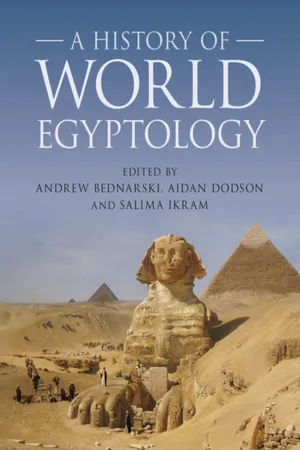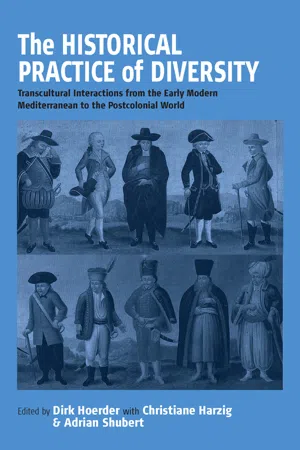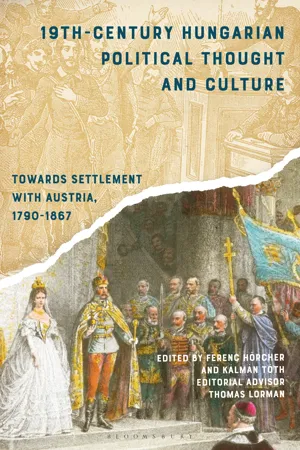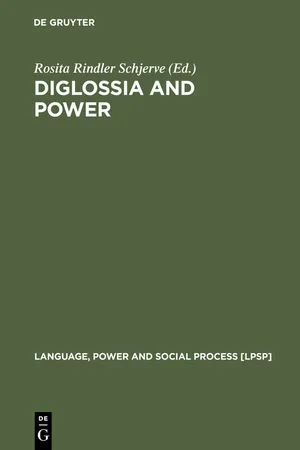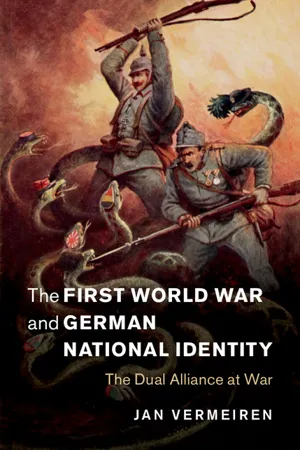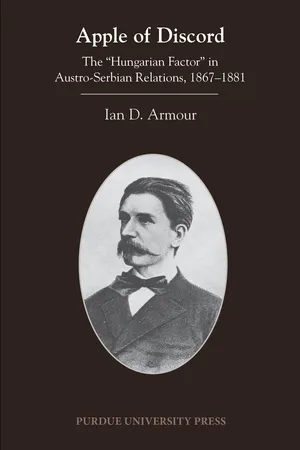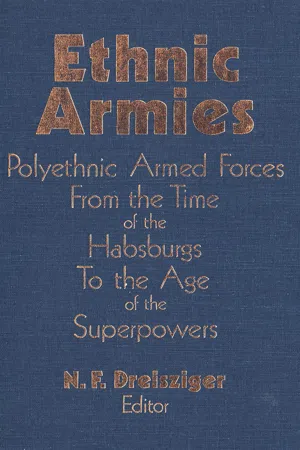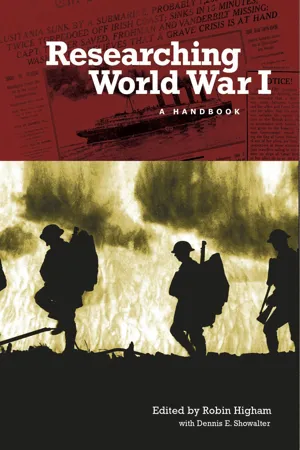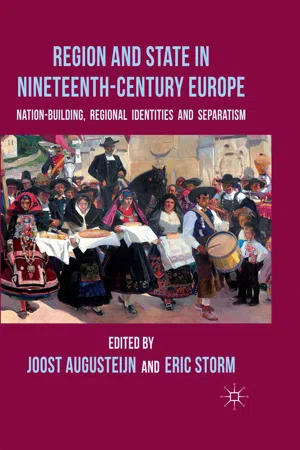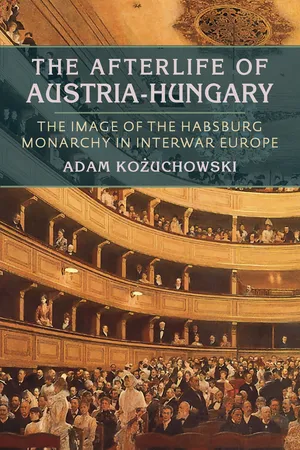History
Austrian Hungarian Empire
The Austro-Hungarian Empire, also known as the Dual Monarchy, was a multinational empire in Central Europe from 1867 to 1918. It was a union of the Austrian Empire and the Kingdom of Hungary, with a complex political structure that aimed to balance the interests of various ethnic groups. The empire's dissolution after World War I marked the end of its influence in the region.
Written by Perlego with AI-assistance
Related key terms
1 of 5
10 Key excerpts on "Austrian Hungarian Empire"
- eBook - PDF
- Andrew Bednarski, Aidan Dodson, Salima Ikram(Authors)
- 2021(Publication Date)
- Cambridge University Press(Publisher)
Chapter 9 THE EMPIRE OF AUSTRIA- HUNGARY AND THE REPUBLIC OF AUSTRIA Ernst Czerny and Hana Navratilova INTRODUCTION T HE HABSBURG EMPIRE , dissolved at the end of 1918, was a sub- stantial if heterogeneous state entity, which included the later modern states of Austria, Hungary and Czechoslovakia, plus parts of Yugoslavia (Slovenia, Croatia, Bosnia-Hercegovina), Italy, Croatia, Poland, Ukraine and Rumania. Its academic centres of Vienna, Budapest, Cracow, Prague and Lemberg (Lviv) included a number of academic positions that embraced not only the study of the ancient Near East including Egypt, but also that of the contemporary ‘Orient’. 1 Throughout the period covered by this book, the study of Egyptology was closely related to that of oriental philology and history. Systematic instruction in oriental languages was part of the training for the Habsburg diplomatic service in view of the Empire’s close contacts with the Ottoman Empire, whether in war or peace. Beginning in the sixteenth century, they intensified in the seventeenth, when Austria had supported a Catholic presence in the Holy Land. 2 Vienna was not only the seat of the Holy Roman Emperor, but also effectively a border town until the 1680s: Budapest was an Ottoman garrison town until the late seventeenth century. The embassies thus needed translations and interpreters, with Austrian ‘Sprachknaben’ (‘language boys’), 3 trained in Turkish, Arabic and Persian, a key part of a diplomatic entourage, were later to become formal members of the diplomatic corps. This political need, plus a growing economic interest in the east that ultimately went beyond the Ottoman Empire, 4 led to an establishment of the Orientalische Akademie in 1754 by Empress Maria Theresia (1717–80, 259 r. 1740–80), acting on the advice of the foremost statesman of the Monarchy, Wenzel Anton von Kaunitz-Rietberg (1711–94). 5 In 1779, Austria also assumed the position of protector of Catholic Christians in Egypt. - eBook - PDF
The Historical Practice of Diversity
Transcultural Interactions from the Early Modern Mediterranean to the Postcolonial World
- Dirk Hoerder, Christiane Harzig, Adrian Shubert(Authors)
- 2003(Publication Date)
- Berghahn Books(Publisher)
— Four — N ATIONAL M OVEMENTS AND I MPERIAL E THNIC H EGEMONIES IN A USTRIA , 1867–1918 R Michael John This essay will deal with the Austro-Hungarian Empire as a “state of many peoples” and the development of national movements in this dy-nastic state. It will focus upon diverse nationalities, but especially upon the Germans in Cisleithania, the Austrian half of the Habsburg Empire. The state of Austria was created following the end of World War I, but the initial stages of the development of such a German-speaking state can be identified much earlier. Industrialization, mass culture, and the constitu-tion of mass parties characterized the second half of the nineteenth cen-tury in Austria, and standardization affected the questions of national and individual identities as well. The idea of ethnically and linguistically homogeneous nation-states contradicted the thinking of the Habsburg dynasty and the concept of state and nation held by the House of Austria. We can clearly identify a multiethnic/nationalistic double character in Austrian society. This dual character had specific consequences for the identity of the state, for the diverse ethnicities within it, and for the indi-viduals themselves. 1 The newer historiography presents the tensions among the different nationalities within the monarchy as clearly connected to the collapse of the empire, although not as the sole cause. The stress of four years of war, military defeat, and the interests of the victorious powers also played an important role. 2 Whereas older literature (often written by Austrian or German historians) viewed the nationalisms of the smaller nations as cen-tral to the collapse of the Habsburg Empire, modern research places more emphasis on German-Austrian and Magyar nationalisms and their hege-monic aspirations. 3 The Supranational State and Growing Nationalism The Austro-Hungarian Monarchy was the second largest state in Europe. - eBook - PDF
19th-Century Hungarian Political Thought and Culture
Towards Settlement with Austria, 1790-1867
- Ferenc Hörcher(Author)
- 2023(Publication Date)
- Bloomsbury Academic(Publisher)
On 8 June 1867, Francis Joseph was crowned legitimate king of Hungary. The Habsburg Empire transformed into a dualist state with two centres (and became the Austro-Hungarian Monarchy) with joint policies in foreign and military affairs. The finances related to these two matters were also joint affairs, but there were two separate governments and parliaments. 11 Historical and European Context The period of dualism, which lasted for half a century, undoubtedly brought with it significant economic modernization, although not every part of the society enjoyed an equal share in this material growth. However, tensions evoked by social conflicts and by the unsolved (and within the existing internal and external framework insoluble) nationality question, mostly under the surface, portended that this ‘Golden Age’ would not be long-lasting. Yet its achievements in both institution building, infrastructural development, economic growth and cultural life were unparalleled, even if the political culture of this Golden Age could not attain the structural clarity and legitimacy that was achieved by the April Laws and the Batthyány government. Conclusion The decades from 1790 to 1867 brought unparalleled success in the political life of the country. While in the first half of the period the king was unwilling to fulfil the demands of the Hungarian Diet, and the court did all it could to slow down the pace of change, the majority of the political elite of the kingdom recognized that, in order to keep the ancient constitution, deep-rooted changes had to take place. The best minds of the nation were employed in drawing up plans for possible scenarios which could modernize the country, including Kazinczy, Kölcsey, Széchenyi, Kossuth, Deák and Eötvös. - eBook - PDF
Diglossia and Power
Language Policies and Practice in the 19th Century Habsburg Empire
- Rosita Rindler Schjerve(Author)
- 2008(Publication Date)
- De Gruyter Mouton(Publisher)
In 1804 Franz, following the example of Napoleon, who had already crowned himself Emperor of France, founded the 'Empire of Austria' referred to above and declared himself Emperor (as 'Austrian Emperor Franz I'). In place of the vanished empire there came into being, in the form of the 'German Confederation' [ Deutscher Bund], an institution in which, in the course of the 19 th century, the idea of a nation state gained the upper hand at the expense of the idea of a federation of principalities, just as Prussia won politically over Austria in 1866. The foundation of a German Nation State in 1870-1871 under the leadership of Prussia is, of course, not part of Austrian history, but must be included in the background ideas to the ethnic disputes in the second half of the century. It also explains the later massive resistance of German-speaking Austrians to the Habsburg state. These problems outlived the monarchy and culminated in 1938 in the surrender of Austrian independent sovereignty. It must be remembered that after 1804 'Austria' referred to a state, but one that had dynastic rather than ethnic connotations. Language and power in the Habsburg Empire 21 3.1. The 'Vormärz'period - Restoration (1815—1848) The period between the Congress of Vienna in 1815 and the Revolution of (March) 1848, often described as Vormärz or Restoration, is usually associated with the image of a police and censorship state, embodied in the person of State Chancellor Metternich. In fact this period is marked by a consolidation of the authoritarian state in which self-administering bodies such as the estates continued to lose ground, but in which the nobility and middle class forces continued to be able to share in the state power apparatus. - eBook - PDF
The First World War and German National Identity
The Dual Alliance at War
- Jan Vermeiren(Author)
- 2016(Publication Date)
- Cambridge University Press(Publisher)
209–17 (p. 215); Bahr, ‘Deutschland und Österreich’, p. 829. 50 E. Zenker, ‘Das österreichische Völkerproblem’, SM, May 1917, pp. 279–82 (p. 279). 51 Mensdorff-Pouilly, ‘Völkerreich-Friedensreich’, p. 227. 52 E. Zenker, Die nationale Organisation Österreichs (Berlin, 1916), pp. 16–17. The idea of Austria-Hungary 87 of national-cultural autonomy. 53 Others asserted that Austria- Hungary guaranteed peace and stability in Central Europe, which would fall prey to a process of Balkanization if the realm were ever to break up: ‘strife and combat everywhere, Europe ablaze, a war of all against all’. 54 The empire was, in this reading, of world-historical signifi- cance. It stood for the possible reconciliation of national interests and embodied Europe’s problems on a smaller scale. The ‘Austrian idea’ symbolized an alternative to the destructive nationalist and materialistic forces of history, and it is evident why non-political intellectuals, too – moved by the prevalent cultural pessimism of the period – identified with the concept, embracing it as an anti-modernist ideal, as myth and utopia. 55 According to many authors, next to its exemplary function as a supranational organization, the Dual Monarchy fulfilled a second duty in the interest of Europe. As it had done for many centuries, the Habsburg Empire served again as an outpost of Christian-Occidental civilization, as a defensive bulwark against the ‘dark forces of eastern barbarism’. 56 In this sense, the Danubian realm defended not only its own existence but also the survival of European culture and human progress in general. 57 Hofmannsthal, however, saw Austria’s task in con- necting rather than dividing East and West. It was ‘borderland, frontier rampart, dividing line .. . between the European domain and, in front of its gates, a bustle of peoples, half-Europe, half-Asia, continuously fluctu- ating in a chaotic way’. - eBook - ePub
Apple of Discord
The "Hungarian Factor" in Austro-Serbian Relations, 1867-1881
- Ian D. Armour(Author)
- 2014(Publication Date)
- Purdue University Press(Publisher)
Chapter 1
Austria, Hungary, and Serbia in 1867
The Habsburg Monarchy in the year of the Ausgleich was still, in terms of territory and population, a great power. By commercial, financial and industrial standards, however, it was weak. Most debilitating of all, with its eleven different ethnic groups, the Monarchy faced a dilemma far more complex than that confronting other multinational empires. No other state in Europe found its foreign policy options so severely limited by nationality problems.It was precisely this question of nationality, at least in its Hungarian form, which demonstrated the need for some lasting constitutional settlement. Constantly obliged to guard against a renewed revolt in Hungary during the absolutist period, the Monarchy could not pursue an effective foreign policy. Even during the Austro-Prussian War, when negotiations between the Emperor Francis Joseph and the Hungarian leadership were already under way, this interconnectedness of foreign and domestic policy was illustrated anew. Forced to cede Venetia to Italy, and to abandon the leadership of Germany to Prussia, Francis Joseph was finally brought to see the necessity of Hungarian cooperation, if he was to recoup these losses. Exclusion from Germany also meant that the position of the German element within the Monarchy was bound to be reduced substantially, while the position of the Hungarians was correspondingly enhanced. Hungarian leaders like Deák and Andrássy, for their part, knew all along that Hungary was too weak to stand on its own, and had to be part of a great power in order to have any influence over its own fate at all.As far as foreign policy was concerned, the provisions made by the Ausgleich were straightforward. It was the differing emphasis on them subsequently by particular statesmen which produced much of the ambiguity in Habsburg foreign policy toward Serbia, as well as in other areas. As Louis Eisenmann pointed out, strictly speaking there was no text of the Settlement: “Dualism is regulated by two laws, analogous or identical in content.”1 - eBook - PDF
Ethnic Armies
Polyethnic Armed Forces from the Time of the Habsburgs to the Age of the Superpowers
- N.F. Dreisziger(Author)
- 1990(Publication Date)
- Wilfrid Laurier University Press(Publisher)
The Leitha, a small river east of Vienna, separated the Austrian half (Cisleithania) of the Dual Monarchy from the Hungarian half (Transleithania). Rather than using these anachronistic names, I have opted here for the terms Austria and Hungary. Awkward as they may seem, the quotation marks next to the word Austria are necessary in order to distinguish between Cisleithania and what I shall be calling German-Austria, the so-called Hereditary Provinces within Cisleithania which after 1918 would form — more or less— the Austrian republic. German-Austria included the provinces of Lower Austria (capital: Vienna), Upper Austria (capital: Linz), Salzburg, Styria, Carinthia, Carniola, the Tirol, and Vorarlberg. In order to better appreciate the ramifications of the ethnic question in the armed forces of Austria-Hungary, it is worth emphasizing the overwhelming importance of the armed forces in the history of that state. Even well before 1867, the army was the major institution holding together what historians and contemporary observers liked to call the Ramshackle Empire, and after the Com-promise Agreement of 1867, the Common Army functioned as the 2 4 Ethnic Annies sole remaining supranational institution within the new Dual Monar-chy. (The common Foreign Service concentrated its attention, by definition, on things outside the Monarchy.) The Habsburg Monarchy had virtually never had a central gov-ernment or unified civil service. Rather, before 1848 there existed several more or less autonomous provincial administrations, manned by local notables, and just a handful of all-monarchical central offices in Vienna, chief among them the Hqfkriegsrat or Court War Coun-cil, which was charged with administration of the military. In the upheavals of 1848, the several major kingdoms and provinces of the Monarchy attempted to set up sovereign governments of their own, retaining only tenuous links to Vienna. - eBook - PDF
Researching World War I
A Handbook
- Robin Higham, Dennis Showalter, Robin Higham, Dennis Showalter, Dennis E. Showalter, Robin Higham, Dennis E. Showalter(Authors)
- 2003(Publication Date)
- Greenwood(Publisher)
This hazardous complexity is elaborated effectively in Samuel Williamson's concise Austria-Hungary and the Origins of the First World War (1991) [106], while a more traditional diplo- AUSTRIA-HUNGARY 133 matic approach is offered in F R. Bridge's The Habsburg Monarchy among the Great Powers (1990) [16]. Interestingly, the weighty question of the degree of prewar cooperation between Austria-Hungary and her all-important German ally is taken up by Holger Herwig in the article "Disjointed Allies: Coalition Warfare in Berlin and Vienna, 1914" (1990) [43], in which the author concludes that there really wasn't any. Revealing much about Habsburg understandings with its only worthwhile ally, Norman Stone's earlier article "Moltke and Con- rad: Relations between the Austro-Hungarian and the German General Staffs, 1910-1914" (1969) [99] reaches much the same conclusion. Also useful is Gary Shanafelt's The Secret Enemy (1985) [88], which explains the convoluted and difficult relationship between Berlin and Vienna under the pressures of war, while the fateful role played by Vienna's top generals in foreign policymaking is revealed in Gerard Silberstein's "The High Command and Diplomacy in Austria- Hungary, 1914-1916" (1970) [90]. ECONOMIC AND INDUSTRIAL MATTERS In the end, the Habsburg military machine cracked under the economic weight of total war. Despite its myriad political and military shortcomings, the Austro-Hungarian military was undone more by material weakness than by any other factor. Simply put, the only semi-industrialized Dual Monarchy (com- posed, in economic as well as political terms, of a well developed western or Austrian half and a more backwards eastern or Hungarian half) was unable to sustain a prolonged fight, much less the extended three-front war which it found itself in. - eBook - PDF
Region and State in Nineteenth-Century Europe
Nation-Building, Regional Identities and Separatism
- J. Augusteijn, H. Storm, J. Augusteijn, H. Storm(Authors)
- 2012(Publication Date)
- Palgrave Macmillan(Publisher)
This forced the state to acknowledge that national groups were political factors and this had to become visible within the system based on the historical crown lands. This process helps to explain the striking paradox that despite its multilingual performance and its supra-national rhetoric, the Austrian political system turned out to be an environment encouraging the transformation of the population into seg- mented national communities much more than the Hungarian one, where the policy was designed to promote assimilation into the Hungarian lan- guage community. Despite all the difficulties, the state’s strategy proved successful insofar as a political solution within the empire always seemed to be within reach, even within Bohemia right up to the war. 46 It was the outbreak of the First World War and the attempts of the Austrian-German politicians and the military to centralise and strengthen German dominance within the Austrian state that turned the composite into a de-composite monarchy. As soon as the balance in the battlefields changed in 1917, the imperial centre faced the reactivation of the demand for feder- alisation of Austria-Hungary in explicit national terms and the redefinition of loyalty towards the new emperor Charles I. Concepts of sovereignty and self-determination for national collectives became increasingly incompati- ble with the crown land structure. When Charles initiated an overall reform of the constitutional system on 16 October 1918, which aimed at substitut- ing the historical regions with national states which were still to be united under the Habsburg dynasty, the leading Entente politicians had already Peter Haslinger 125 long decided in favour of the dismemberment of the Habsburg monarchy. Under the conditions of the ending war, Habsburg regionalism had in the end to give way to a system of independent national states. Notes 1. R. A. Kann, Geschichte des Habsburgerreiches 1526 bis 1918 (Vienna and Cologne 1990), 581. - eBook - PDF
The Afterlife of Austria-Hungary
The Image of the Habsburg Monarchy in Interwar Europe
- Adam Kozuchowski(Author)
- 2014(Publication Date)
- University of Pittsburgh Press(Publisher)
And yet, in an apparently Habsburg style, the British historian added that “the bureaucracy felt itself Austrian, and did truly, if thinly, in-corporate that elusive idea,” and that it was permeated with aristo-cratic spirit, partly due to the personal policy of Franz Joseph, who always made a point to nominate nobles to important posts. Finally, Macartney, in contrast to his Austro-German colleagues, listed two more social groups that were also faithful supporters of the monarchy: “the Jews, the most, and the Gypsies, the least influential of all races.” 29 However, as mentioned, Austro-German historians also acknowl-edged some clouds on the bright firmament of the Austro-Hungarian political scene. According to Viktor Bibl, the primordial sin of dis- 42 AUSTRIA-HUNGARY IN HISTORIOGRAPHY patching from the appropriate course of Austro-German politics was committed by Prime Minister Eduard Taaffe, who first decided to seek support for his government among the Slavs and against the German liberals, who were omnipotent in the 1870s and early 1880s, and hence “governed the monarchy up to death.” By doing so, Bibl suggested, Taaffe encouraged the rebellious nationalities to fight for a more and more powerful position within the monarchy, and finally to destroy it. It was by no means an unavoidable process, he argued, quoting the most famous nineteenth-century Austrian poet Franz Grillparzer, who wrote, “If only we had a Bismarck for five years—he would be done with them.” 30 What came after Taaffe was an “agony” of “political morphinism.” Other Austrian authors were not so openly chauvinis-tic; nevertheless, their image of the last decades of the monarchy is equally pessimistic: driven by the national antagonisms, it ran from crisis to crisis.
Index pages curate the most relevant extracts from our library of academic textbooks. They’ve been created using an in-house natural language model (NLM), each adding context and meaning to key research topics.
